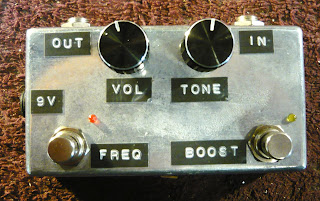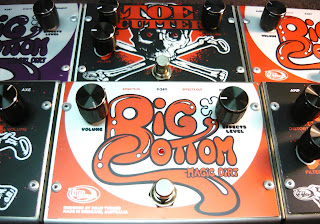
Distinctive lush chorus, amazing vibrato, the Retro-Sonic Chorus Ensemble is the only true reproduction of the 1976 CE-1 using the original analog BBD. Its lush, focused tone is the standard by which all other chorus effects are measured. The Chorus Ensemble is capable of a wide range of sounds from analog chorusing to pulsating vibrato, having the unique Vibrato feature that was incorporated on the original which simulates a Leslie rotating speaker. The chorus and vibrato functions are selectable through a footswitch control, allowing desired presets to be maintained by separate control. The Mono an Stereo outputs allow for a two amp setup for an amazing chorus expierience. Now powered by 9VDC, (thanks to a custom power chip) there's no need for a special adapter, just plug into your existing rig and enjoy! Based on customer demand, the improved Chorus pedal now has stereo outputs and operates from standard 9VDC power supplies.
The additional stereo output provides users the option of a two-amp setup. This brings a heightened dimension to the existing thick sound of the Chorus effect pedal, which has already developed a loyal following throughout North America and Europe.
In the March, 2006 issue of Guitar Player Magazine ©, Barry Cleveland said of the mono version Retro-Sonic® Chorus “This is definitely a thick and sensual old-school chorus…This baby’s definitely a keeper!”
Retro-Sonic® has now developed a custom proprietary solution to allow the use of 9VDC power input, and internally convert this to the Chorus voltage requirements. Internally, the unit still runs on the same voltage spec, (meaning there is no impact to the tone of the circuit), but musicians now have the convenience of hooking up to a standard negative center 9VDC adapter, or popular multi-tap power supply units.
The Chorus outputs are now labeled “MONO” and “STEREO”. Inserting a plug in the “STEREO” jack, splits the dry and wet signals for stereo separation to the two amps (wet signal on the mono output, and dry signal on the “stereo” output). Removing the plug from the stereo jack puts the unit back into mono mode.
























